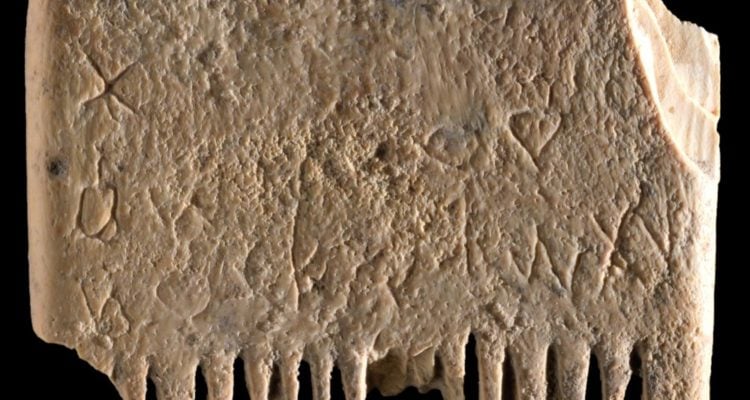The Canaanite script reads: “May this tusk root out the lice of the hair and the beard.”
By Pesach Benson, TPS
Israeli archaeologists have discovered what may be the oldest sentence ever written – a prayer against lice etched on a Canaanite comb that dates back to around 1700 BCE.
The letters of the inscription were engraved in a very shallow manner, saying “May this tusk root out the lice of the hair and the beard.”
While the comb was discovered in 2017 at Tel Lachish in central Israel, the letters were noticed only in subsequent post-processing in 2022 by Dr. Madeleine Mumcuoglu of Hebrew University.
The inscription was deciphered by semitic epigraphist Dr. Daniel Vainstub at Ben Gurion University (BGU), who confirmed the 17 characters were of Canaanite script. The ivory was tested by Professors Rivka Rabinovich of HU and Yuval Goren of BGU who found the comb was made of elephant tusk.
Their findings were published in the peer-reviewed Jerusalem Journal of Archaeology.
Hebrew University Professor Yosef Garfinkel, one of the directors of the Tel Lachish dig, called the comb, “a landmark in the history of the human ability to write.”
“This is the first sentence ever found in the Canaanite language in Israel,” said Garfinkel.
“There are Canaanites in Ugarit in Syria, but they write in a different script, not the alphabet that is used till today. The Canaanite cities are mentioned in Egyptian documents, the Amarna letters that were written in Akkadian, and in the Hebrew Bible. The comb inscription is direct evidence for the use of the alphabet in daily activities some 3,700 years ago. This is a landmark in the history of the human ability to write.”
The ivory comb is small, measuring roughly 3.5 by 2.5 cm and has teeth on both sides. Although their bases are still visible, the comb teeth themselves were broken in antiquity. The central part of the comb is somewhat eroded, possibly by the pressure of fingers holding the comb during haircare or removal of lice from the head or beard.
The side of the comb with six thick teeth was used to untangle knots in the hair, while the other side, with 14 fine teeth, was used to remove lice and their eggs, much like the current-day two-sided lice combs sold in stores.
Ancient combs were commonly made from wood or bone. Elephants are not native to Israel, suggesting the ivory was a luxury object presumably imported from Egypt.
The researchers also found the remains of head lice between two of the teeth, 0.5–0.6 mm in size.
Lachish was a major Canaanite city state in the second millennium BCE and the second-most important city in the Biblical Kingdom of Judah.
To date, 10 Canaanite inscriptions have been found in Lachish, more than at any other site in Israel. The city was the major center for the use and preservation of the alphabet during some 600 years, from 1800 to 1150 BCE.





